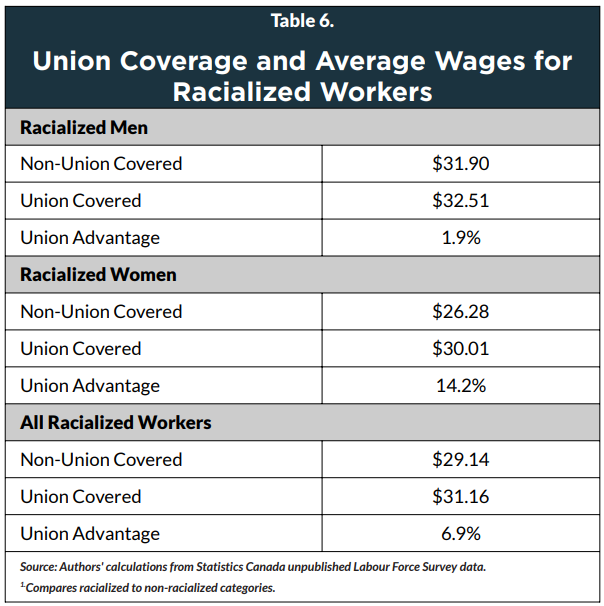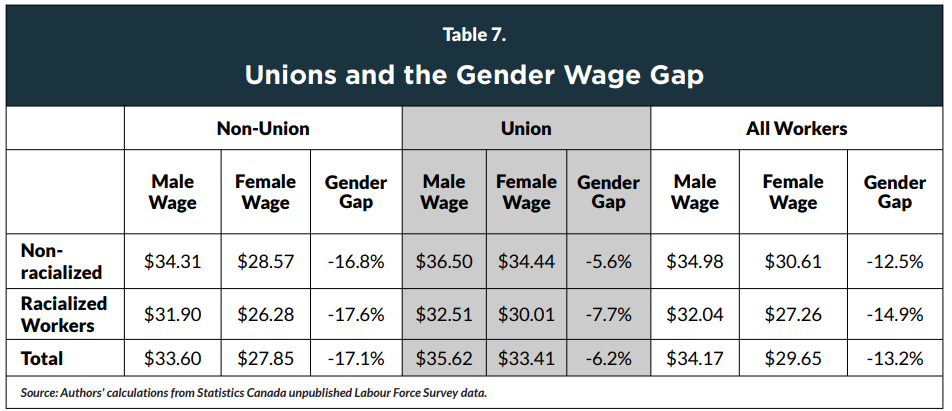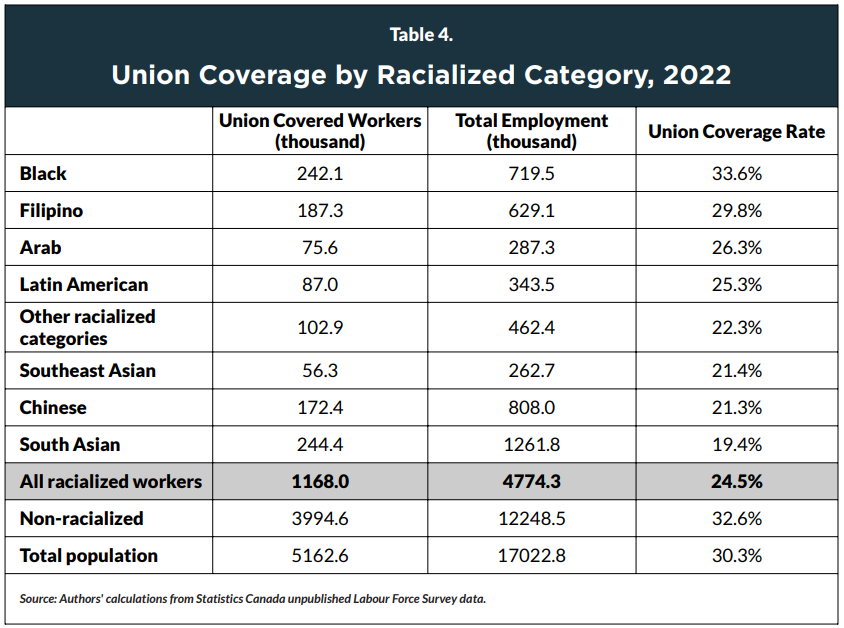
Union advantage leads to smaller gender wage gap, finds report

A report from the Centre for Future Work is calling for Canadian unions to welcome more racialized workers into their fold as data points to advantages of unionization.
One of the advantages of being a union member has to do with wages, according to the report.
Overall, workers who are members of a union earn $31.16 per hour. Among non-union members, the number drops to $29.14 per hour. This points to a 6.9% union advantage.
While the union advantage when it comes to wages is small among men (1.9%), it jumps to 14% among women.
“The correlation between lower union coverage and lower wages confirms unions need to become more effective at organizing with racialized workers, and engaging with them in collective action for better jobs and better pay,” says Jim Stanford, economist and director of the Centre for Future Work.

Source: Centre for Future Work
Six in 10 (60%) Canadians say people living paycheque to paycheque is today’s norm, according to a previous report.
Being part of a union is also a way to reduce the gender wage gap, according to the centre’s report, which cites data from Statistics Canada (StatCan).
Among union members, men earn $35.62 per hour while women earn $33.41 per hour – pointing to a 6.2% gender wage gap.
Among non-union members, however, men earn $33.60 per hour while women make $27.85 per hour – equivalent to a gender wage gap of 17.1%. That wage gap is higher than the data for Canada overall, which stands at 13.2%.

Source: Centre for Future Work
On average, women in Ontario need to work 15.5 months to earn what men in the province earned in 2023, according to a previous report.
The problem, however, is that racialized workers are less likely to be represented by a union compared with non-racialized workers, according to the Centre for Future Work report.
In Canada overall, 30.3% of all employees are covered by a union. While the number increases to 32.6% among non-racialized workers, it drops to 24.5% among those belonging to a racialized group.

Source: Centre for Future Work
“In 2022, racialized workers earned hourly wages almost 10 percent lower than non-racialized workers – and were 8 percentage points less likely to be covered by a union contract,” said Stanford.
“Only one-quarter of racialized workers are covered by a union contract, compared to one-third of non-racialized workers. The gap is even worse for racialized women, reflecting the intersectional barriers they face in accessing decent work – and achieving collective representation to fight for improvements.”
Now, Stanford is calling for unions to represent more racialized workers.
For that to happen, “unions need to become more visible and more consistent in fighting for racial equality in everything they do: from organizing campaigns, to collective bargaining, to union education, to leadership development, and grassroots community engagement,” he says.
Not doing so could prove to be detrimental to the power of union, he says.
“The simple math of Canada’s labour force cannot be denied: if unions cannot become more representative of the growing racialized segment of Canadian workers, their power will inevitably shrink in future years. But to succeed in organizing among racialized workers, and lifting their wages, job quality, and living standards, unions must act as vehicles of racial justice at the same time as they fight for better jobs and wages.”
Just this year, there have already been a number of union actions to fight for better pay and working conditions for workers across the country.